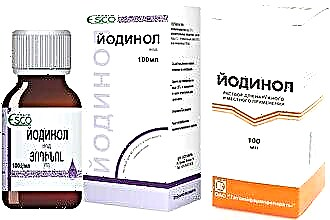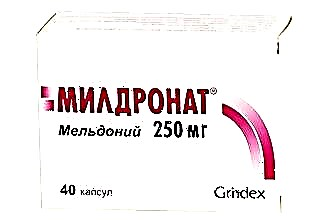In the presence of myocardial ischemia and a high likelihood of developing a heart attack, it is important to start therapy in a timely manner. Everyone should know the indirect signs of the disease, especially the elderly and those who have already had heart problems. I propose to consider in more detail how the preinfarction state manifests itself in women and men.
What it is
Signs of impending acute myocardial necrosis occur in 50–65% of cases. Scientists who investigated this phenomenon associate this condition with the gradual closure of the lumen of the coronary vessel, while the heart attack itself is a complete cessation of blood circulation in a certain area. Wherein:
- The general excitability of the body changes, which ultimately leads to spasm of the coronary arteries.
- Atherosclerotic deposits cause contraction of vascular smooth muscle fibers, increasing the likelihood of thrombosis and internal bleeding.
Narrowing of the lumen of the coronary artery against the background of spasm and leads to necrosis. But it is preceded by an acute attack of angina pectoris, which can be seen on the ECG and which is accompanied by vegetative manifestations.
Signs
Symptoms of a pre-infarction state, or harbingers of impending disaster, manifest themselves in different ways, depending on the presence of other diseases, age and gender. But there are general signs of unhappiness. The patient develops a clinic of unstable angina pectoris and autonomic abnormalities. Particular caution should be caused by:
- Newly-onset chest pain.
- The progression of attacks, which become more frequent, prolonged, change their nature and irradiation (pain radiates to the hyoid region, the right side of the chest, arms).
- To stop the attack, it takes more time and the amount of "Nitroglycerin".
- The appearance of angina pectoris at rest, when physical activity is absent.
- The onset of pain after a heart attack for a short time (from a day to a month).
- Sudden circulatory failure after bypass surgery.
- Attacks of angina pectoris in the morning, caused by coronary spasm.
According to my observations, elderly patients, people with diabetes mellitus and pathologies of the nervous system do not feel the approach of a heart attack. Necrosis itself in them also manifests itself in an atypical way or proceeds without pain. The only way to prevent a heart attack is to regularly do an electrocardiogram.
Among women
Men and women deal with and describe seizures differently. The fairer sex is characterized by an erased clinical picture. I usually pay attention to the following phenomena:
- sharp pain or pressure behind the sternum with or without irradiation;
- shortness of breath, difficulty breathing, cough;
- a feeling of fullness in the stomach;
- dizziness;
- unmotivated weakness;
- heartburn, nausea;
- loss of appetite;
- fear, excitement, irritability and aggression of unknown origin;
- increased sweating;
- cold hands and feet.
In men
In the stronger sex, the clinical picture is more typical, and it is usually not difficult to make a preliminary diagnosis. There is a clinical picture of unstable angina pectoris, which is described above, in addition, there may be the following symptoms:
- increased fatigue, inability to do the usual work even after rest;
- sleep disturbance, frequent awakening at night;
- attacks of anxiety without a cause;
- headache, decreased visual acuity;
- discomfort behind the breastbone;
- digestive disorders not related to the quality of food (heartburn, nausea, flatulence);
- pale skin, sweating, chills.
It is important to understand that pre-infarction can manifest itself differently in each person. In some patients, I noted many symptoms at the same time, while in others, clinical signs were absent.
What to do and how to treat
People with a tendency to myocardial ischemia and their loved ones need to know how to behave when signs of pre-infarction develop, whether it is necessary to go to the doctor or call an ambulance. I also want to tell you how to behave before the arrival of the doctor and what measures will be taken after the patient is admitted to the hospital.
Do I need to call an ambulance
If even the smallest symptoms appear, you should immediately go for an examination and begin treatment for a pre-infarction state in a hospital setting. This is important, since it is the untimely visit to the doctor that often becomes the cause of death in the first hours of the development of myocardial necrosis.
If acute pain suddenly appears, if it occurs more and more often and more intensely, and there is also a picture of vegetative disorders, then it is best to transport the patient in a special car with a medical team. She will begin emergency treatment and take an EKG. In the event that the symptoms are not very pronounced, you can go for a consultation with a cardiologist at your place of residence. But at the same time, you do not need to stand in line, it should be explained that a person has an acute attack and requires a quick response from a specialist.
What to do before the doctor arrives
Pre-heart attack treatment starts with simple steps at home:
- take the most relaxed and comfortable position (lying or sitting);
- unbutton squeezing clothing;
- open the window and give access to air;
- calm down, drink a sedative;
- put a tablet of "Nitroglycerin" under the tongue;
- if there is no result, repeat the medication (every 5 minutes);
- use Aspirin and chew Captopril at high pressure.
All these actions can save a person's life, since preinfarction with a high degree of probability develops into necrosis and the consequences of delay are tragic.
Treatment tactics
With an acute attack, the patient is taken to the intensive care unit of the cardiological profile and placed in the intensive care unit. The treatment regimen in a hospital is usually as follows:
- oral use of beta-blockers, with vasospastic form of angina pectoris, it is preferable to give drugs - calcium antagonists;
- nitrates intravenously in saline in a dropper or under the tongue;
- antiplatelet agents;
- subcutaneous administration of direct coagulants.
A patient with signs of a pre-infarction state in an acute period needs bed rest; with severe pain, neuroleptanalgesia or the administration of opioid analgesics is used. In the future, to prevent a recurrent attack and the development of a heart attack, constant intake of statins, "Aspirin" and beta-blockers is required.
Case from practice
A woman came to me with complaints of severe weakness and fatigue in the last two weeks. Feels short of breath and pressure in the chest at times. The attacks occur after physical exertion. On the ECG in dynamics, there is transient ischemia along the lower wall of the left ventricle. Diagnosed with exertional angina, a high probability of developing a heart attack.
For three weeks in a cardiological hospital, the patient took nitrates, beta-blockers, Aspirin. She was discharged in satisfactory condition. It is recommended to avoid stress and stress, a diet with the exclusion of fatty foods, and the use of medicines selected in the hospital.
Expert advice
If there is a risk of developing myocardial ischemia, I recommend:
- spending time in the fresh air, walking, moving more;
- switch to a low-calorie diet rich in vitamins and minerals;
- check regularly the work of the heart on an ECG and donate blood for cholesterol levels;
- give up bad habits (especially smoking);
- after the diagnosis of angina pectoris is established, take drugs that prevent the development of necrosis;
- at the slightest symptoms that may be harbingers of an acute condition, do not waste time, but immediately call a doctor.



